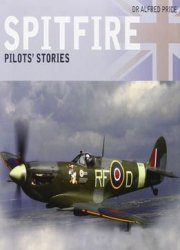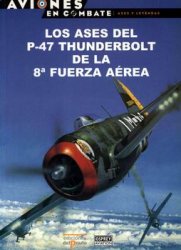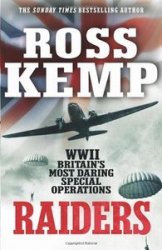EAST AFRICAN AIRWAYS CORPORATION (EAA): Kenya, Uganda, Tanganyika, Zanzibar (1946-1977). Under provisions of an October 30, 1945 East African Territories (Air Transport) Order in Council, EAA is incorporated on January 1, 1946 by the governments of Kenya, Uganda, Tanganyika, and Zanzibar. Initial capitalization is ?50,000 and ownership is divided between the governments on a basis of 68%, 23%, 9%, and 0.7%, respectively. Sir Charles Lockhart is appointed chairman.
British Overseas Airways Corporation (BOAC) provides technical support under contract for six de Havilland DH 89A Dragon Rapides leased from the Ministry of Civil Aviation and continues to operate long-haul services from the capital cities. A total of 12 pilots are recruited and proving flights, begun late the previous year, are completed by the end of the first quarter.
Regional services are initiated on April 3 as the Dragon Rapides commence 21 weekly services. These include five-times-a-week roundtrips from Nairobi to Dar es Salaam via Mombasa, Tanga, and Zanzibar and from Dar es Salaam to Tanga via Zanzibar. Thrice-weekly services are from Dar es Salaam to Nairobi via Zanzibar, Tanga, and Mombasa. Twice-weekly services are from Nairobi to Dar es Salaam via Moshi, from Nairobi to Entebbe via Kisumu, and from Dar es Salaam to Lindi. Weekly services are from Nairobi to Kitale via Eldoret and from Dar es Salaam to Mbeya via Morogoro, Nduli, Southern Highlands, and Chunya.
A DH 89A is lost in an accident on June 28 under unknown circumstances, but is soon replaced by another unit.
At the request of the government of Tanganyika, the company undergoes reorganization beginning on September 1, on which day the company’s fleet is grounded for a month. Sir Reginald Robbins becomes the second chairman on October 1, with Malin Sorsbie as general manager. A ?34,200 order is placed for six more Dragon Rapides.
A total of 9,403 passengers are carried in this inaugural year, but a ?25,483 operating loss is suffered.
As the new aircraft become available in 1947, additional routes and frequencies are introduced. BOAC is approached for newer and larger aircraft.
Bookings climb to 13,580 and the operating loss falls to ?19,617.
On February 22, 1948, the carrier receives five Lockheed L-18 Lodestars and spare parts for them from British Overseas Airways Corporation (BOAC); costing ?30,000, the five are christened Lake Victoria, Lake Nyasa, Lake Albert, Lake George, and Lake Edward.
The U. S.-made Lockheeds are followed on February 27 by the delivery of four DH 104 Doves; costing ?53,200, the quartet receives the names Masai, Buganda, Chagga, and Swahili. The heat and high altitude of East Africa will result in poor performance by these de Havillands.
The Lockheeds are placed into service over the Nairobi-Dar Es Salaam route on March 21 and the Doves on the Nairobi-Entebbe run on April 14. L-18 Nairobi-Lindi flights via Mombasa begin on April 13. During the summer and fall, a cooperative route into the Belgian Congo is operated with Sabena Belgian World Airlines, S. A. employing the Belgian line’s L-18s.
Bookings reach 23,000 and the operating loss is reduced to ?11,931.
Sir Alfred Vincent becomes the third chairman, on January 1, 1949 and capitalization is increased to ?221,500. Following closure of the
Congo joint venture at the end of the second quarter due to low rider-ship, the three L-18s employed on that service are purchased by EAAC; only one is named, the Lake Naivasha.
The first Douglas DC-3 is delivered on October 25; christened Kongwa Pioneer, it is placed on charter service to Uranbo on November 5. Meanwhile, a coastal Nairobi-Durban DH 89A route is opened on November 2. The second DC-3, Iringa Pioneer, arrives in December.
Enplanements total 36,132 and a ?5 operating profit is cheered.
The third DC-3, Mbeya Pioneer, is acquired in the spring of 1950. Weekly Nairobi-Salisbury DC-3 flights via Mbeya begin in August. A new route is also started between Nairobi and Durban via Dar es Salaam and Blantyre. The first Dove is withdrawn late in the year.
Bookings accelerate to 49,000.
Two Macchi MB-320s are placed in service in 1951, but being found unsuitable, they are quickly withdrawn, as are the last three DH-104s, two DH 89As, and three Lodestars; a fourth Lodestar is withdrawn for parts cannibalization. At the same time, arrangements are completed for the purchase of Lodestars from South African Airways (Pty.), Ltd. EAAC had originally requested four, but SAA will only provide the planes if the company takes seven. Consequently, the seven arrive during the remainder of the year and are christened Mtwara Safari, Tanga Safari, Uganda Safari, Kenya Safari, Tanganyika Safari, Mombasa Safari, and Zanzibar Safari. They will receive new engines over the next 12 months.
The Durban service ends and overall passenger boardings advance to 63,594.
On February 6, 1952, Queen Elizabeth II, on the day of her accession, begins her return to London aboard the DC-3 Kongwa Pioneer from Nanyuki to Entebbe; the aircraft is the first of any airline ever to carry a reigning British monarch.
L-18s are employed to transport Muslim pilgrims on Hadj flights to Mecca beginning in May; the charters are operated in cooperation with Aden Airways, Ltd. Hadj flights will be flown every spring hereafter. Plans are made to replace the Lodestars as six more DC-3s join the fleet under the names Seyyid Said Bin Sultan, Lord Delamere, Sir John Kirke,
J. Hanning Speke, Joseph Thomson, and Sagana II.
The uprising of the local Mau Mau rebels leads the colonial government to declare a state of emergency on October 20.
Withdrawal of the Lodestars accelerates during the fourth quarter and enplanements for the year are 94,216.
Airline employment stands at 900 in 1953. An ultimately unsuccessful new route is inaugurated in January from Mombasa to Victoria, Seychelles. The final scheduled L-18 service is completed in February; thereafter, the Lodestars become freighters. When all-cargo flights are launched in September, among the most noteworthy is the transport of fresh milk daily from Mombasa to Dar es Salaam and the return of the empty cans.
The original DC-3s Kongwa Pioneer, Iringa Pioneer, and Mbeya Pioneer are sold and are replaced by four newer units, David Livingstone, Sir Richard Burton, James A. Grant, and Alexander M. Mackay. In addition, a Consolidated PBY-5A Catalina is also purchased. Although the flying boat will represent the company in the motion picture Mogambo (directed by John Ford and starring Clark Gable and Grace Kelly), it will be gone within a year, sold to the small operator Seychelles-Kilimanjaro Air Transport, Ltd.
Passenger bookings are up to 108,783.
During a state visit to Uganda, Queen Elizabeth II and Prince Philip fly to their April 29-30, 1954 appointments aboard an EAA DC-3. The regional route from Nairobi and Dar Es Salaam to Durban via Blantyre, closed in 1951, is now reopened. The first DC-3 cargo flights begin during the fourth quarter.
Customer boardings this year advance to 131,431.
On May 18, 1955, a DC-3 with 4 crew and 16 passengers crashes into Mt. Kilimanjaro, Tanganyika; the wreck is found three days later and there are no survivors.
In December, Nairobi-Salisbury DC-3 service via Abercorn and Lusaka is inaugurated.
Passenger traffic is 151,507 for the year.
The fleet in 1956 includes 10 DC-3s and 4 DH 89As; a DC-3 is chartered from South African Airways (Pty.), Ltd. to replace the one lost the previous year. Arrangements are made to charter three Canadair DC-4M Argonauts (known in the U. K. as C-4s) from the British flag carrier. Weekly Dar Es Salaam-Ndola and Entebbe DC-3 operations are launched in March.
Bookings this year are up to 169,446.
In early winter 1957, arrangements are made to acquire a pair of wet-leased Argonauts from British Overseas Airways Corporation (BOAC). The first unit is delivered on March 4 and, employing a BOAC crew, begins Dar es Salaam to London flights via Entebbe, Khartoum, Benghazi, and Rome, on April 2, followed later in the month by service Nairobi to Durban service via Dar es Salaam.
A second and third C-4 Argonaut arrive on August 24 and September 2 and EAA crews take over the roundtrip BOAC London to Nairobi and Dar Es Salaam Argonaut service on September 3. Nairobi to Bombay via Aden and Kuwait Argonaut service begins on September 15, the first Indian service to be flown directly from East Africa.
The British name Argonaut is dropped for the DC-4M, which reverts to that of its manufacturer when the three planes are purchased toward year’s end. As the marketing department has it in its advertisements, customers are encouraged to “Fly the Canadair!”
Passenger boardings this year swell to 174,991.
Another C-4 Argonaut is received, under lease, in April 1958. DC-3s replace DH 89As on the routes to Soroti, Musoma, and Tororo. When Wilson Airport opens at Nairobi, all of the airline’s engineering facilities are transferred to it.
In August, an order is placed for two DH 106 Comet 4s for 1960 delivery, and the fourth C-4 Argonaut is returned to BOAC.
All three of the remaining ex-BOAC aircraft are transferred to the South African route when a Bristol Britannia 102, also chartered from British Overseas Airways Corporation (BOAC), begins Nairobi-London service on October 8. Later in the month, a second weekly service to Bombay via Aden and Karachi is initiated.
In November, authority is received from Great Britain for the inauguration of a single, weekly Canadair coach-class service to England, beginning in the new year.
Jet service to London begins on December 2 under a block-seat agreement with British Overseas Airways Corporation (BOAC), which grants EAAC the right to purchase a set number of reserved seats on each roundtrip. Enplanements for the year drop to 158,841.
Low-cost Colonial Coach-class DC-4M Canadair service is introduced between Nairobi and London during the first week of January 1959.
On January 6, Canadair service starts from Nairobi to Johannesburg. The number of destinations visited now approach 40, although Mombasa’s airport still requires improvement before it can be employed by the Canadairs. A second leased Argonaut enters service in February. Toward the end of the year, the carrier again confirms its order for two Comet 4s of its own.
Boardings drop again, down to 153,717.
A DC-3 is lost under unknown circumstances in a crash at Entebbe on January 12, 1960.
During July, a pair of DH-89As are removed from service and provided to a new subsidiary company, the reactivated Seychelles-Kilimanjaro Air Transport, Ltd. It begins to operate them over a route from Zanzibar to Pemba via Tanga and Dar es Salaam. The two Dragon Rapides are replaced with DC-3s, while the last two remaining DH-89As are sold out of service for ?6,000.
The two owned Comet 4s are delivered during July and August, while a third is ordered.
As the situation in the Belgian Congo deteriorates, the company provides sufficient airlift to evacuate 1,500 Western citizens from danger.
Captained by Peter Henn, the Comet 4 VP-KPJ inaugurates London-Nairobi twice-weekly service via Rome on September 17; Nairobi-
Rome-London return flights commence on September 19. On September 22, London-Nairobi and Dar Es Salaam Comet 4 flights via Rome and Khartoum are inaugurated. The London-Nairobi Comet 4 route is extended to Johannesburg on October 8.
This year, in which EAAC becomes the first Commonwealth airline to operate the Comet 4, enplanements soar to 191,741.
Although resources are knowingly stretched thin in serving three widely separated points, Comet 4 Bombay flights via Karachi are launched on January 2, 1961. These are the first jet services across the Arabian Sea.
A fourth de Havilland jetliner is ordered in March. Service to London is flown via Benghazi beginning in April, with the stops at Khartoum and Rome withdrawn. Arusha to Mwanza flights commence in April and in October DC-3 charter flights commence to the coastal city of Malindi.
An agreement for pooled services with Aden Airways, Ltd. is signed during the fourth quarter.
Customer boardings this year are level.
The fleet in 1962 includes 9 DC-3s, 3 Comet 4s, and 3 owned and 2 leased DC-4M Canadairs.
Having purchased a set number of seats and cargo space, the company’s Comets begin stopping at Aden in early January. The route between Nairobi and Aden is offered four times a week: once each by EAAC Comet and Canadair and twice by Aden’s own C-4 Argonauts.
A Canadair C-4 Argonaut with three crew and on a training flight crashes while landing at Nairobi on April 11; there are no fatalities.
The third Comet 4 is delivered on April 12, replacing the weekly Canadair service to Karachi with a twice-weekly service to and beyond the Pakistani city.
Patrick A. Travers becomes general manager on May 1, the same day roundtrip frequencies to London are made daily.
During the third quarter, ?1.15-million order is placed for three Fokker F.27-100s; soon thereafter, a fourth is requested as well.
The new passenger terminal at Wilson Airport, Nairobi, is dedicated in September.
The first three Fokker Friendships are delivered in October and November and are employed on route proving and training flights for the remainder of the year. Traffic figures are unavailable.
In early 1963, the F.27-100s are placed in service over the short-haul and regional routes, replacing DC-3s on several, including the service to Durban.
The last Canadair is retired by the end of the first quarter. During April, planning starts for a pooled service, with Aden Airways, Ltd. and Air India, Ltd., from East Africa to India. Details are worked out and an agreement between the three companies is signed on August 14, taking effect on September 1.
Meanwhile, in early August, a general ban against South African Airways (Pty.), Ltd. flights throughout Africa is begun.
A DC-3 being prepared for a charter to Bechuanaland to pick up and return 28 refugees is burnt out at Francistown, Kenya, on August 29.
Weekly DC-7CF all-cargo service between Nairobi and London begins on October 4. EAAC halts its F.27-100 service to Durban and Comet 4 flights to Johannesburg on October 12. The next day, Paris becomes a stop on the service from Nairobi via Benghazi to London.
A fourth F.27-100 in delivered in January 1964.
Three Vickers Super VC10s are ordered in the spring. Twice-weekly F.27-100 service is inaugurated on April 1 to Bujumbura, Burundi, from Nairobi and Entebbe. On April 2, Nairobi and Entebbe to Frankfurt Comet 4 flights commence. Service to the underdeveloped airports at Mafia and Kilwa now ends.
Improved services to India become the goal of the May operational start of a pooling arrangement entered into the previous fall with Air India, Ltd. and Aden Airways, Ltd.
Comet 4 flights are started from Nairobi to Bombay via Addis Ababa and Karachi during August.
On October 6, 1,500 workers strike at Nairobi to protest the delays seen in the “Africanization” of the carrier’s senior administrative positions. Also in October, twice-weekly Nairobi-Cairo and weekly Nairobi-Addis Ababa Comet 4 operations are inaugurated.
Chairman Sir Alfred Vincent retires in December.
Chief A. S. Fundikira becomes chairman on January 31,1965; Wilson Kyobe is appointed general manager as the “Africanization” process begins. A working committee examines the legal foundation of the consortium carrier and BOAC is requested to withdraw its ownership stake, in exchange for a buyout of its contract.
The workforce totals 3,117 and the fleet stands at 3 Comet 4s, 6 DC-3s, 1 DH 104, and 4 F.27-100s, divided among the registries of Kenya, Uganda, and Tanzania.
On March 31, a ?11 order is placed for three Vickers Super VC10s. A Comet 4 is leased from BOAC in October, while all of the aircraft receive a new livery.
Revenue passenger miles for the year total 351,224.
Direct Comet 4 service is inaugurated on February 9, 1966 from Nairobi to Blantyre. The jet service is in addition to that provided with F.27-100s and is laid on to replace the loss of service that occurs when Central African Airways Corporation stops flying into Nairobi. BOAC receives a ?250,000 buyout check during the first quarter.
A pool agreement is signed with Ethiopian Airlines, S. C. in March; under its terms, EAAC operates twice-weekly shared Comet 4 service from Nairobi to Addis Ababa while Ethiopian flies thrice-weekly B-720-060B roundtrips from Addis Ababa to Nairobi.
Twice-weekly Comet 4 roundtrip frequencies between Nairobi and Ndola start in May.
The first Super VC10 is delivered in October, beginning service to London; the second Super VC10 arrives in December.
The Comet 4 leased from BOAC in 1966 is returned in March 1967. Also during the first quarter, de Havilland DHC-6-100 service is inaugurated, with a leased machine, to Tsavo National Park for tourists wishing to visit Kilaguni Lodge. Orders are placed for the Canadian-made turboprops.
Comet 4 flights to Mauritius starts in April, followed by May frequencies from Nairobi to Lagos and Accra. Meanwhile, the third Super VC10 arrives in April, at which point a firm order and an option are placed, respectively, for fourth and fifth units.
Service to Cairo is suspended following the Six-Day War in June.
The first owned Twin Otter is received in July, having been flown from Downsville, Ontario, to Nairobi by an EAAC crew. A Super VC10 completes a roundtrip Bombay to Hong Kong proving flight in September.
The Super VC10s displace the Comet 4s in November from their services to Europe and India; the Comet 4s are, however, retained for regional and charter operations. Kenya, Uganda, and Tanzania sign a Treaty for East African Cooperation on December 1. Among its clauses is a requirement that certain public corporations, including EAAC, have their constitutions rewritten and their boards reshaped.
The last DH 89A is withdrawn in early 1968, while the number of DC-3s is reduced to just six. The displaced capacity is made up through the delivery of three more Twin Otters. Service to Athens begins on April 3.
The previous year’s proving flight having been deemed a success, Super VC10 roundtrips between Bombay and Hong Kong commence in November.
Another Super VC10 is delivered in April 1969. As a result, frequencies to Frankfurt, Hong Kong, Paris, and Rome are increased in number and new stops are made at Bangkok and Copenhagen.
Two former Swissair, A. G. DC-9-15s are leased from their manufacturer in November; however, the charter on the second is cancelled before its arrival.
A Comet 4 is leased for a quarter from Dan Air/Dan Air Services, Ltd. on January 9, 1970 as partial replacement for two owned EAAC Comet 4s removed due to corrosion.
Dan Air sends another Comet 4 to the company on February 22. The last of five VC10s, a Super VC10, joins the fleet on February 28, and is the last of the just 54 VC10s built.
On May 19, orders are placed for three DC-9-32s.
The two corroded Comet 4s are sold to Dan Air/Dan Air Services, Ltd., while the Comet 4 leased from that British carrier is returned in December, just as DC-9 crew training of the British and Australian pilots is being completed.
A new maintenance organization to handle the Douglas transports is set up in Africa.
Weekly Super VC10 service is inaugurated to New York (JFK) from Nairobi on December 10. The company’s first owned DC-9-32 arrives during the month, while yet another Dan Air/Dan Air Services, Ltd. Comet 4 is chartered on December 28.
Two more DC-9-32s are delivered in February 1971. On February 22, the Dan Air Comet 4 chartered in December is returned.
Flights to Rwanda must, however, be suspended on July 8 because of a crisis between Uganda and Tanzania.
The unduplicated route mileage stretches 40,000 miles and passenger enplanements grow to 564,229.
Having sustained a flat tire while on its takeoff roll from Addis Ababa for Rome and London on April 18, 1972, Flight 720, a VC10 with 11 crew and 96 passengers, unsuccessfully attempts to abort. The jetliner overruns the runway, drops to a lower ground level, breaks up and explodes in flame (43 dead).
On September 16, a group of men dressed in police uniforms burst into the control tower at Dar es Salaam and hold the staff hostage. Minutes later, an EAAC DC-9-32 departs without authority, manned by an unknown crew and the intruders slip away. The plane is found abandoned next morning on an airfield at the foot of Mount Kilimanjaro. Although the government of Tanzania investigates, no one ever learns why the Douglas has been stolen or by whom. The plane is repaired on the spot and returned to service.
Enplanements in 1973 total 536,000.
The employee population reaches 4,674 by 1974.
Two gunmen take over an F.27-100 with 35 passengers and en route from Nairobi to Malindi on March 20 and fly it to Uganda, en route to the U. S.S. R.; at Entebbe, Ugandan President Amin personally persuades the two to surrender.
Routes are extended during the year to Lourenco Marques, Kinshasa, Cairo, and the Seychelles. The stop at the Egyptian capital comes after a three-year suspension.
A Boeing B-747-148 is wet-leased from Aer Lingus Irish Airlines, Ltd. during the summer to fly weekly roundtrip holiday service from Nairobi to London and Frankfurt. As necessary, immigration formalities can be completed aboard.
Passenger boardings jump 17% to 651,045.
The workforce in 1975 is 4,586. Three DC-9-30s replace the Comets and VC10s. The Irish Jumbojet is once again hired to fly weekend holiday traffic to and from Europe.
Passenger bookings rise 8% to 708,435.
Increasing financial, political, and diplomatic difficulties plague the carrier’s operations during 1976. The Aer Lingus Irish Airlines, Ltd.
B-747-148 is once again chartered in December and is employed to operate holiday tourist flights from Nairobi to Frankfurt and London.
Kenya Airways, Ltd. is established on January 22, 1977 to replace EAAC, which, without a political and financial base, suddenly ceases trading during February.
There is an unofficial website maintained by Mark Olweny at Http://escher. arch .adelaide. edu. au/% 7Emolweny/Uganda/eaa. html and another maintained by Tony Edlind at Http://home8.swipenet. se/~w-8rr81/index3.htm.
EAST AFRICAN SAFARI AIR, LTD.: P. O. Box 28321, Nairobi, Kenya; Phone 501408; Fax 500169; Http://www. africansafariair. com; Year Founded 1989. CHS Aviation, Ltd. is established at Nairobi’s Wilson Airport in 1989 as an FBO and general aviation concern. Over the next four years, passenger and small group charters are also offered into, around, and out of Kenya under the name East African
Safari Air, coupled with scheduled services to the nation’s national parks.
The company enters the inclusive tour charter (ITC) business in 1993 in cooperation with Tour Africa Safaris and Air Europe, S. p.A. Offices are opened in Mombasa and Zanzibar that help the company emphasize services into the Italian, and later, French markets. Flights from Nairobi to Italy are launched with a wet-leased Boeing 767-35HER from Air Europe.
Flights continue in 1994-1996, with the company also chartering an Airbus Industrie A310-300 and Douglas DC-10-30 for additional capacity. During the latter year, the company brings 25,564 tourists into Kenya and another 8,590 to Zanzibar (Tanzania).
Service is maintained in 1997-1999, during which years the A310 and Douglas are replaced with an A320-212. During the latter year, a homepage is opened on the Internet’s World Wide Web.




 World History
World History









